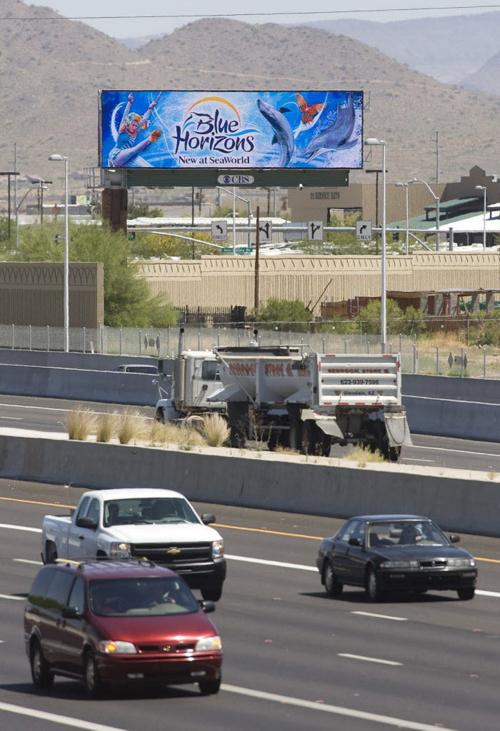PHOENIX — A Lake Havasu City Republican lawmaker wants to open his section of the state to electronic billboards.
The proposal by Sen. Sonny Borrelli would create a 60-mile semicircle around the Tropicana Hotel in Laughlin, Nevada, where these signs could be erected by billboard companies. That area stretches from near the Hoover Dam on the north, out Interstate 40 past Kingman on the east, and south past Lake Havasu City.
What Borrelli is offering on behalf of Lamar Advertising would amend a 2012 law which limits electronic billboards with changing messages to a swath of central and southwest Arizona.
Those limits were crafted following negotiations between the sign industry and “dark sky” advocates, including astronomers who said they did not want a new source of light pollution.
The 2012 deal followed an appellate court ruling that internally illuminated billboards with changing messages were illegal along state highways.
A bid by lawmakers to simply override that ruling was vetoed by then-Gov. Jan Brewer, who was concerned about damaging the state’s “dark skies” reputation. That resulted in the deal Brewer did approve: Allowing the signs in a wedge from the Phoenix area along I-8 and I-10 west to the state line.
“The issue is one of fair opportunity,” said Lamar Advertising lobbyist Nick Simonetta. He said there’s no reason billboard firms in other areas of the state should be denied the opportunity to put up new electronic signs.
Borrelli said he understands the concerns of the state’s astronomers on the issue of light pollution.
The 2012 deal specifically made southern and southeastern Arizona, with its telescopes on sites including Kitt Peak and Mount Graham, off limits. The law also prohibits the signs north of the Phoenix area, from one end of the state to the other, in a special bid to protect Lowell Observatory in Flagstaff.
Borrelli said what he’s offering should not affect Lowell. He said the observatory is at 7,500 feet elevation.
“There’s a couple of mountain ranges that are between there and Kingman,” Borrelli said. “We’re not encroaching on their space.”
He conceded that argument did not work last year when he introduced similar legislation. But Borrelli pointed out that measure would have allowed electronic billboards throughout Mohave County, versus the 60-mile radius from Laughlin in his latest bid.
And, like the law already in place for the balance of Arizona, the signs would have to go dark after 11 p.m.
Simonetta said he doesn’t believe new signs would make a big difference in existing light pollution from Laughlin, “the big lit-up Roman candle” on the Colorado River.
A spokesman for Lowell Observatory said officials there were studying the proposal and at this point had not yet taken a position.
The measure has not yet been scheduled for a hearing.





